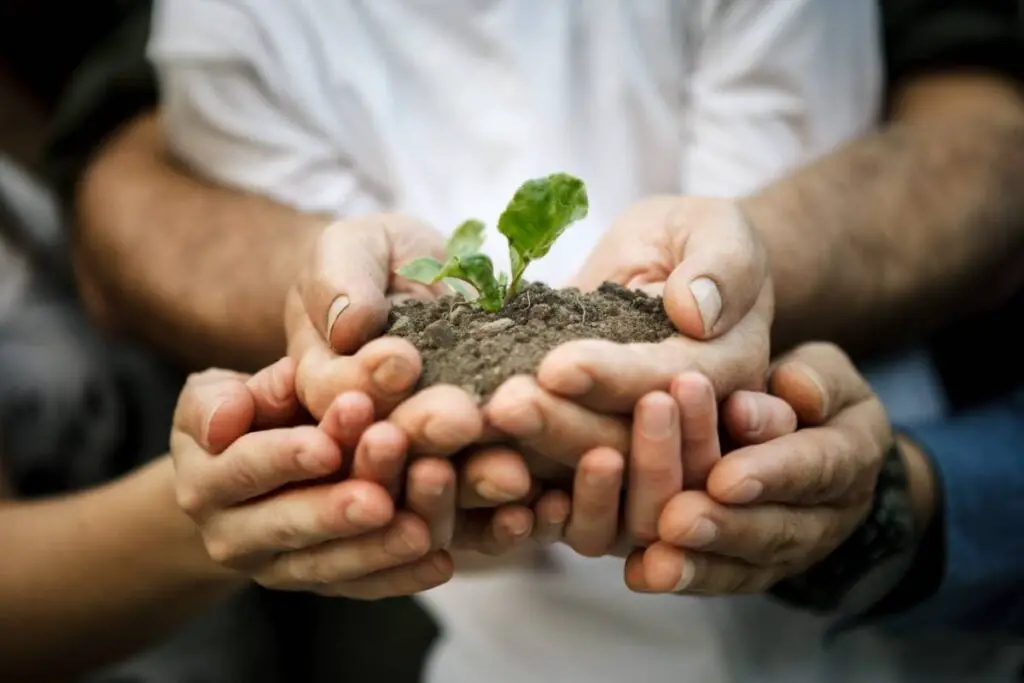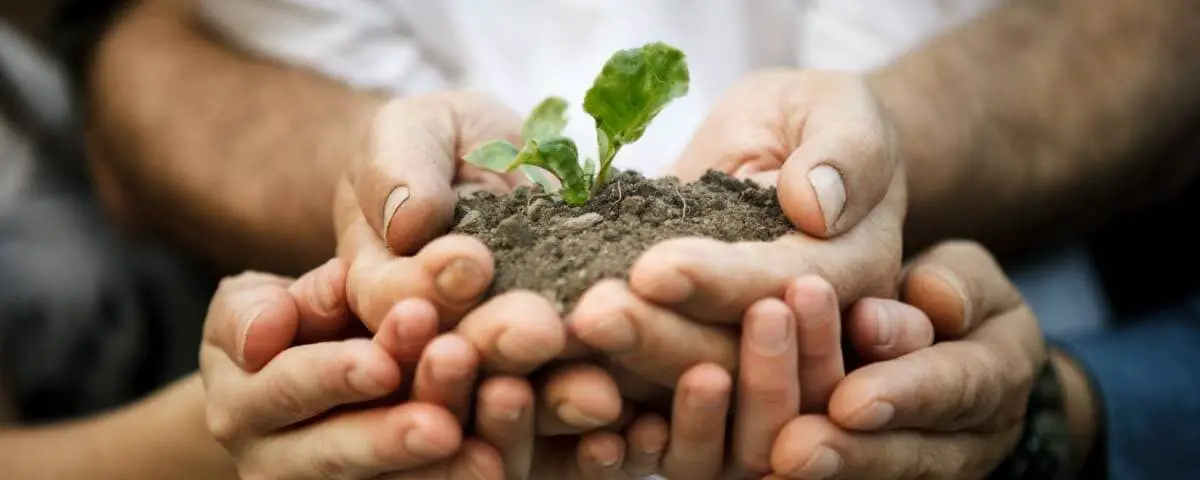|
Getting your Trinity Audio player ready...
|
Plants mean the world to us, and most would agree that the world would be a dreadful place without our little green friends. They do so much for us beyond giving us oxygen, so why are plants important to humans?
Plants are important to humans because they provide us with oxygen, absorb carbon dioxide, clothe and shelter us, act as food for humans and animals, make medicines, are used as fuel, and so much more.
To learn more about what makes plants so special, we take a close look at the function of plants and why we shouldn’t take them for granted.

Plants, Humans, and the Relationship between them
The relationship between humans and plants is significant, as it has been since the beginning of time. The first humans used plants to survive in their environment. This was because they didn’t have any other options.
As time passed, humans realised that using plants was much more than just survival. It was also a way to make life better for themselves, their families, and even future generations.
This realisation led to many other uses for plants in our lives: medicine, food sources, and even clothing.
Plants Produce Oxygen, Which Keeps Us Alive
The first thing you probably think of when you think about plants is the oxygen they produce. And it’s true! Plants are unsung heroes. They produce oxygen, which keeps us alive.
But they do a lot more than just make oxygen. Plants help fight pollution, especially air pollution. And they help improve the air quality by taking in carbon dioxide and giving off oxygen.
They also increase humidity by releasing water vapour and passively taking in pollutants on the surface of their leaves, which are then carried to the plant’s roots and soil. Getting rid of the toxins makes it easier for people to breathe. And by adding more oxygen to the air it fights climate change and global warming.
Most of the Food We Eat Can’t Be Made without Plants
If you are a vegan or vegetarian, you probably only eat plants. You might not think of it this way, but most of our food can’t be made without plants. Meat, which comes from animals, is the main exception. But even meat production relies on plants to feed the animals we slaughter and eat.

If you eat meat, chances are good that you still have plants in your diet in some form or another. That’s because fruits and vegetables are plant-based foods that we can eat right away, while grains and beans are processed products made from plants.
Plants Are an Excellent Source of Natural Medicine
Plants are an excellent source of natural medicine, and they’ve been used for thousands of years by people worldwide.
There are tons of different kinds of plants, each with unique benefits. Some will help you feel energised, and others will make you feel relaxed (maybe even sleepy). Some can boost your immune system while others help with digestion—there’s something here for everyone.
If you’re feeling sick, try drinking a cup of hot tea made from dried or fresh herbs like ginger root or chamomile flowers. These are both excellent choices because they have anti-inflammatory properties that can help calm your system when it’s overwhelmed by illness.
You can also try making a tincture out of lemon balm leaves or catnip leaves, or both. These delicious tinctures can be taken straight off the spoon as needed throughout the day. So you don’t have to worry about wasting time brewing another batch when it’s time for another dose.
Plants Provide Human and Animal Habitats
Plants provide habitats to animals and humans in a variety of ways.

They provide homes for insects, birds, and other animals who live on or near the ground. Trees and shrubs can be used for nesting or sleeping by birds and squirrels. While the roots of larger plants can serve as a hiding place for snakes, lizards, and other reptiles.
Humans build shelters using plants and trees, as they are strong and can withstand the elements. They also provide shade from the sun’s heat during the hot summer months. Trees and shrubs also provide shelter from rainstorms; some plants even grow tall enough to block out sunlight from hitting buildings or roads nearby.
Plants Add Beauty to Our Environment
Plants are a beautiful addition to our environment. They give our everyday lives color, texture, and life. Flowers are the most common plants that make the world around us look nice. There are many different colors and shapes of flowers, so there is something for everyone.
The plants in our homes, offices, and other places where we spend a lot of time also significantly impact the aesthetic of our environment. We feel happy, healthy, and at ease when we look at them.
Plants make the room look more beautiful by giving it more color and depth, just like this Succulent Indoor Cactus from Amazon.com. You can put them on display in a planter, on a wall, in a geometric glass vase, or even in a live wreath. Because they are so easy to take care of, they can even be an excellent centerpiece for your office desk.
If you have pets like fish, you may use plants as decoration for their habitat like this Freshwater Live Aquarium Plants from Amazon.com. Aquatic plants will improve the water quality in your aquarium community by making oxygen and taking in carbon dioxide. Adding live plants is good for the natural ecosystem and gives your aquarium pets a place to hide and feel safe.
Final Thoughts
Regardless of the debate around the origins of life, plants have proven to be an essential part of human development. The planet may have been barren and lifeless. But as soon as plants proliferated, they started providing humans with food, making it hard to envision civilisation without them.
Plants are not only essential to our health and nutrition but also to our homes and architecture. They help us make sense of our environment and offer us therapeutic benefits that can’t always be found in a pill bottle or at a therapist’s office.
Green living has never been more exciting.

